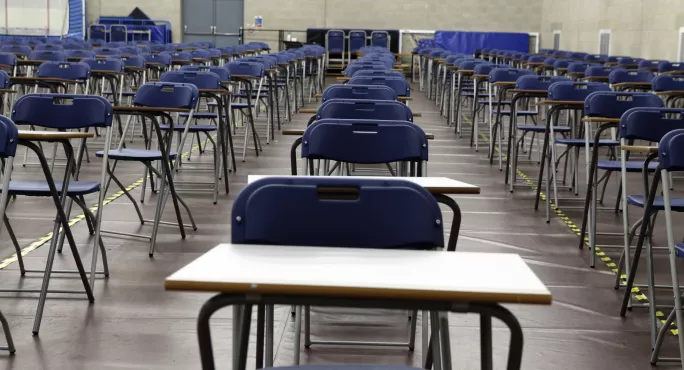GCSE exam tiers: everything you need to know
Share
GCSE exam tiers: everything you need to know
Preparing for exams is a year-round job. At this time of year, teachers of maths, sciences and languages may already be thinking about which tier to enter their students.
The deadline for entries for the June 2019 exam series is 21 February, although you can make amendments to your entries, including changing the tier, free of charge up until 21 April.
But how do you know which tier is right for your students?
Having analysed the data from the reformed GCSE exams that students sat in 2017 and 2018, we have noticed some themes emerging around tiering. Here’s what you need to know.
Foundation or higher: which is right for your students?
In summer 2017, and again in 2018, we generally saw maths teachers choosing the right tiers for their students, with very few students “falling off” the higher tier without a grade.
However, in 2018, all sciences and modern foreign language subjects were also tiered and we saw a very different picture of student outcomes on the higher tier for these subjects.
Due to the challenge of choosing tiers in the new qualifications, more students than expected underperformed on the higher tier in sciences and languages, and would have fallen off without a grade.
As a result, Ofqual decided, for one year only, to widen the boundaries of the pass grades (ie, 4-3 on combined science and 3 on single sciences and languages), and to add an additional pass grade of 3-3 on combined science. This meant that most students received a grade and were rewarded for their performance. But it’s probably the case that many of the students affected by the boundary changes were performing at foundation-tier level and that’s the tier they should have been entered for.
We’re not expecting Ofqual’s exceptional arrangements this summer to be repeated again next year, so if lots of your students got 4-3/3 or any got 3-3, we’d suggest reviewing your entry decisions very carefully, as it’s very likely some of those pupils should have been entered for the foundation tier instead of the higher.
How can you make the right tiering decisions?
Looking at common exam questions is often the best way to decide on the right tier.
At least 20 per cent of questions are common to both tiers, so when your students sit the sample papers, look closely at how they do on those common questions - if they can’t answer many of them, they’re unlikely to have a good experience of the higher tier and should probably be entered for foundation.
It’s also really important and relevant to remember that the new tiers cover a different grade range (because of the new 9-1 structure) than the old ones did. The new foundation tier now goes all the way up to a grade 5 - so there’s actually a grade available above the old C grade that was the limit before - and the higher tier now goes down only to a grade 4.
Our advice is that, where the old C/D grade boundary might have been your best guide for choosing the right tier for your students, now the old B/C grade boundary is probably closer to where the higher/foundation split might be.
And where tiering outcomes have been good in your school or college, speak to the teachers in those subjects and find out which strategies they used.
Find out more
AQA has put together a set of videos with more guidance on how to choose which tier to enter, as well as the structure of the new tiers and analysis of other subjects.
Dale Bassett is head of curriculum strategy at exam board AQA

